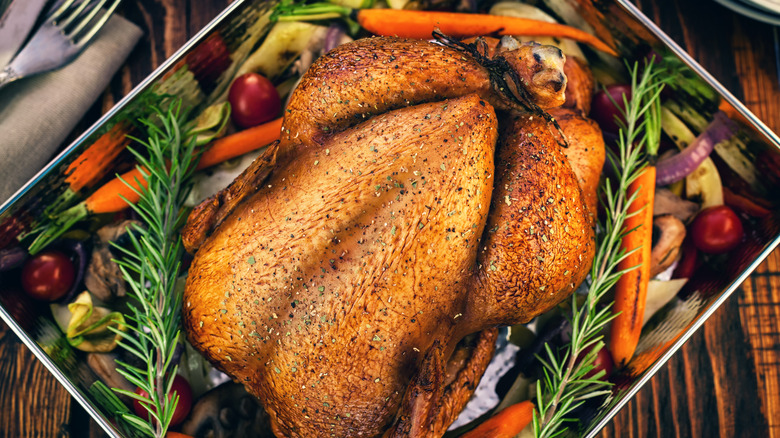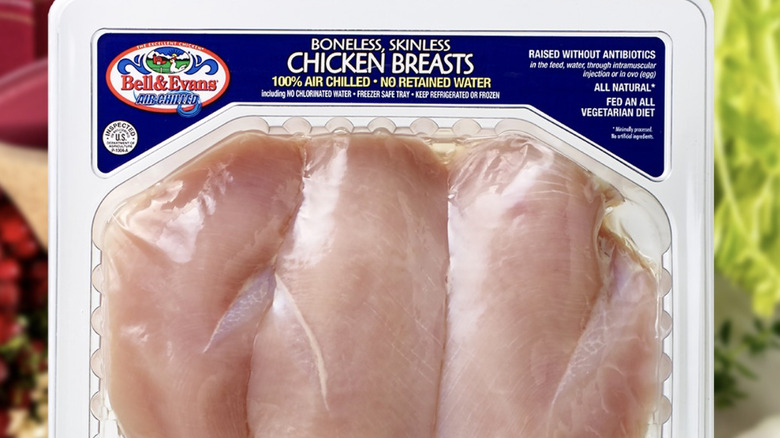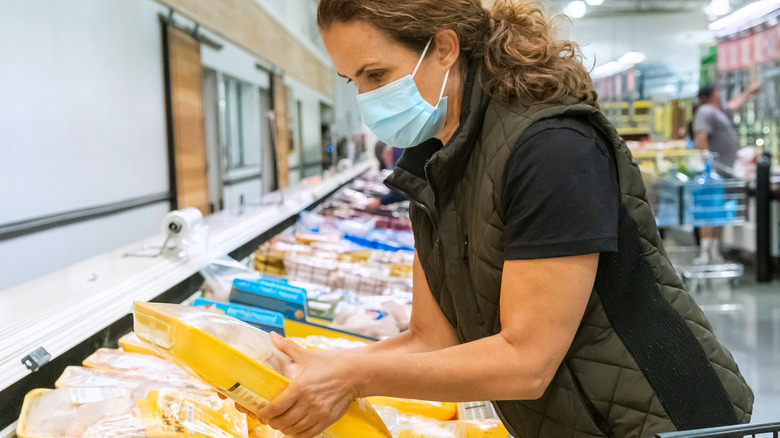Why You Should Always Choose Air-Chilled Over Water-Chilled Chicken
Picking up a package of chicken for dinner is way more complicated than it used to be, with options for organic, free-range, hormone-free, no antibiotics, and a relatively new one for the U.S. market: air-chilled chicken. European chicken companies have utilized air-chilling for decades, but it's still not the mainstream way of processing chicken in America.
To prevent bacteria, the USDA requires chilling poultry to at least 40 degrees Fahrenheit within four to eight hours of slaughter, depending on weight. The traditional way to achieve this is by chilling the carcasses in chlorinated ice water. Many chickens tumble together in the mixture, so the chlorine helps prevent bacterial cross-contamination and foodborne illnesses such as salmonella. But in the process, chickens absorb up to 12 percent of their body weight in the chlorinated water, diluting their flavor and creating other negative consequences –– ones that are avoidable with air chilling.
Chilling poultry doesn't have to involve water. Cold air accomplishes the same desired outcome without the chickens taking on the water. This makes them more flavorful, tender, and quicker to cook. They have less contact with humans and other poultry, which benefits the environment by reducing water consumption. It could also cost you less money overall.
How the air-chill process works
It's hard to visualize the process of air-chilling chickens, but just imagine a large processing plant with temperature-controlled cold chambers and a long assembly line. Chicken cooled by this method typically dangles overhead in open purified air, often in a single formation, with no touching or cross-contamination.
Efficiency depends on the size of the operation and its available space. The generational family-owned Bell & Evans poultry company in Pennsylvania expanded its capacity to a two-line system that can hold roughly 38,000 chickens at a time. Chickens journey through the cold-air chambers on two-mile lines, taking about three hours to reach the designated safety temperatures.
Bell & Evans owner Scott Sechler explains in a YouTube video how 100% air chilling, rather than water chilling or a hybrid version, allows the chicken's natural juices to remain intact, sealing them in over the slow process. This tenderizes the meat without diluting its taste, ensuring flavorful chicken.
In water-chilled processing, much of the chlorinated water seeping into the chicken settles under the skin, allowing bits to leak onto that yucky pad at the bottom of supermarket-bound packages. It can also make the skin soggier than normal, which is why some chefs believe the alternative, air chilling, leads to crispier skins in cooked meats. And sans the water, many chicken recipes will take less time to cook.
What about value and cost of air-chilled chicken?
Air-chilling poultry takes longer, leading to higher production costs, which inevitably get passed on to buyers at the grocery store. But there's more than meets the eye regarding consumer pricing.
Water-chilled chickens are heavier because of the extra water weight they've absorbed, so the buyer pays for that extra water weight. In that sense, air chilling, without the added water, gives you more chicken on dinner plates, with the bonus of higher quality and more tenderness from longer chill times.
Many poultry purveyors who use air-chill processing also shun other controversial poultry and meat practices. For example, air-chilled chickens sold at Whole Foods exceed general standards by banning the addition of antibiotics, added hormones, and animal byproducts in poultry feed and higher levels of animal comfort, welfare, and foraging instincts. Trader Joe's maintains similar standards for its heirloom, pasture-raised, air-chilled chicken breasts, as does Sprouts Farmers Markets.
Paying more at the grocery store stings, especially during times of high inflationary prices. But a few items warrant the extra few dollars –– this might be one of them.



